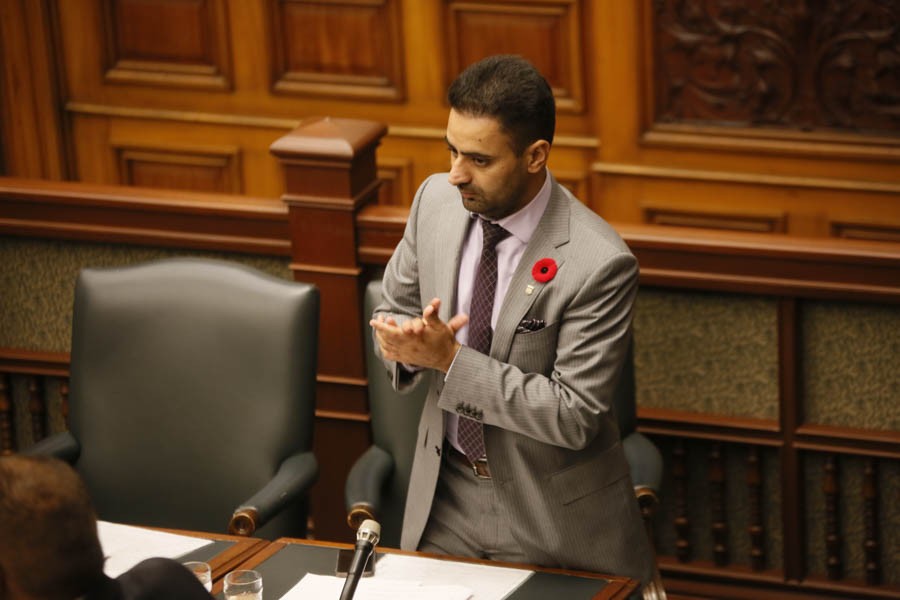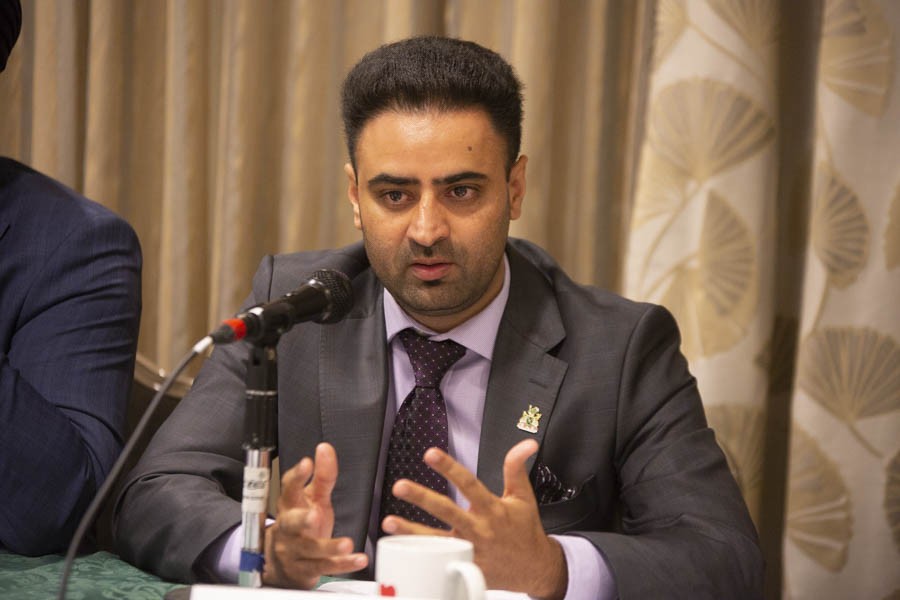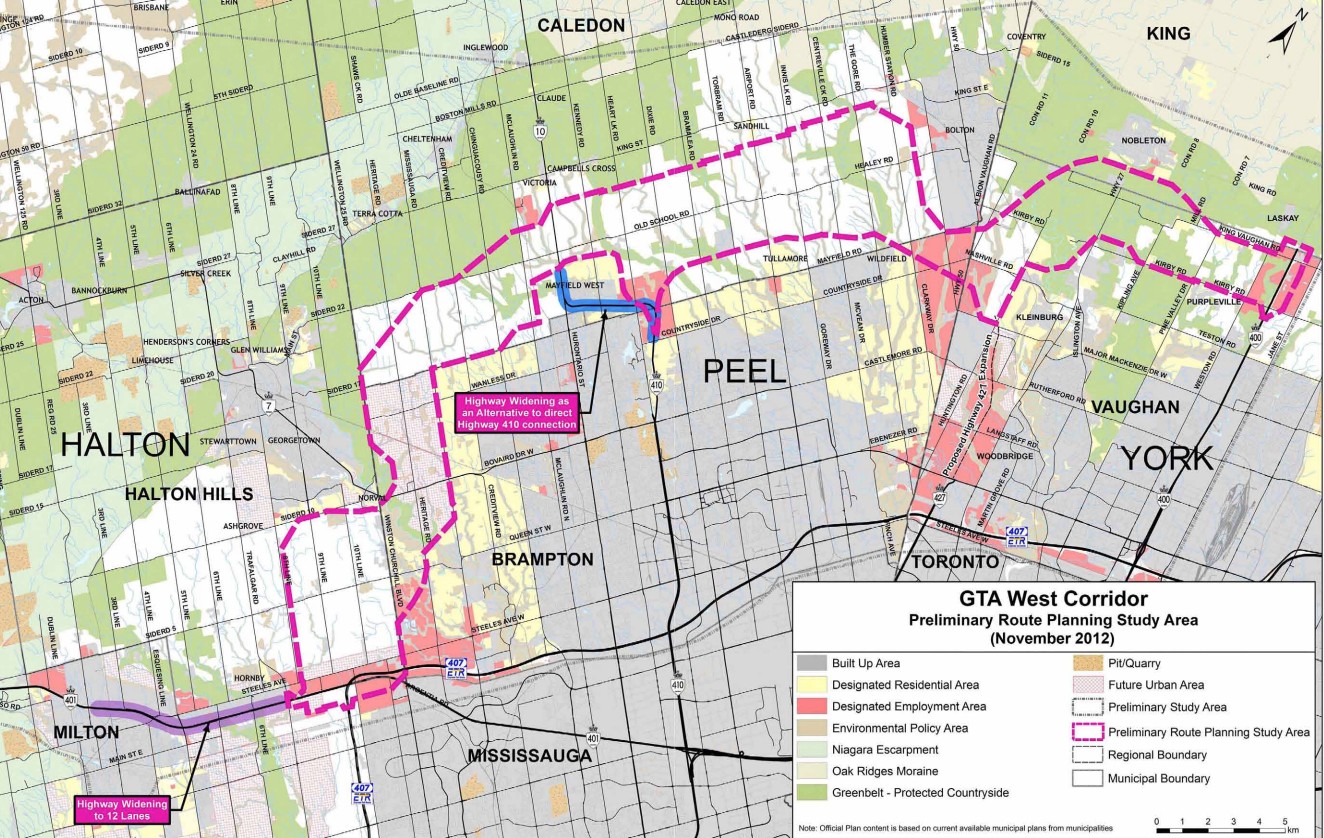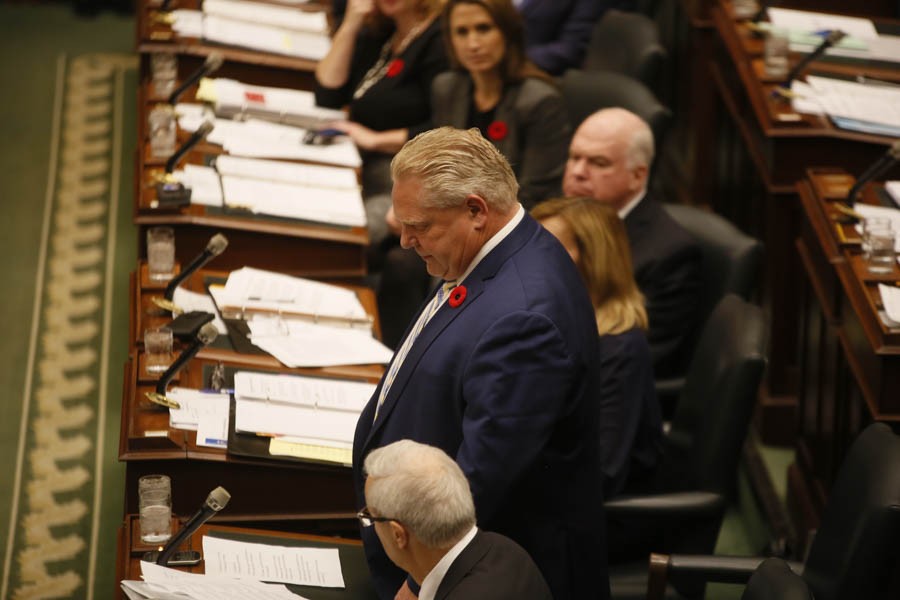
Brampton MPP pushes to resume GTA West highway study as province passes sprawl-inducing bill
The Ontario government is one step closer to reigniting the study to construct another major highway in the GTA, one that has been widely criticized by municipal leaders for being more a gift to the development industry than a step toward reducing gridlock and attracting employers.
A motion delivered by Brampton West MPP Amarjot Sandhu (PC) last week at Queen’s Park seeks to immediately resume the environmental assessment (EA) process for the GTA West Corridor, which he said will “improve the region’s transportation networks, reduce travel times and help alleviate traffic congestion across the GTA.”
The timing of the motion was particularly significant as MPPs debated and then passed Bill 108, the controversial omnibus legislation introduced by the governing PCs that has been widely criticized for its developer-friendly policies, which critics say threaten environmentally sensitive areas and encourage urban sprawl.

Brampton West MPP Amarjot Sandhu
The same criticisms have been levelled against the proposed GTA West Corridor. The highway, which would go west from Vaughan through Caledon, then arc southwest, skirting the edge of Brampton on its way toward the 401/407 between Mississauga and Milton, would pass on or near the edge of protected areas: the provincial Greenbelt and the Oak Ridges Moraine.
Before the project was suspended in 2015 by the former Liberal government and the EA was cancelled—effectively killing the project—in 2018, it drew plenty of criticism as a backwards step in a new era of transport alternatives, compact smart growth and environmental protection.
The PCs have touted the project as a necessary step toward alleviating congestion on existing GTA highways, boosting commerce and jobs by speeding the movement of goods and services through the region. But it’s also been described, openly, as a doorway to opening up significant lands for residential and commercial development — including a lot of agricultural land currently being held by developers and speculators looking forward to cashing in.

Previously proposed study area for the GTA West Corridor.
“The previous Liberal government neglected to invest in new transportation infrastructure for the last 15 years and now commuters in the GTA experience some of the worst commute times in North America,” says a statement from Sandhu. “Completing the EA for the GTA West Corridor would allow the government to build more transportation infrastructure in the future to meet the needs of commuters and businesses as our economy grows.”
It is unclear what triggered Sandhu to bring forward the motion to immediately resume the study, and there appears to be little evidence that the Brampton West MPP openly campaigned on the idea in 2018.
Little is known in terms of timelines and how much work remains to be completed on the EA, but if Sandhu’s motion is approved at Queen’s Park, the project would resume where it left off in 2015.
Facts on the ground haven’t changed much since the original EA was cancelled. While it’s unclear how much the new study will rely on research and findings from the previous work done between 2007 and 2015, familiar voices are returning to argue about whether its power to alleviate traffic and spur economic development would outweigh the multibillion-dollar price tag and damage to protected areas — and whether it will actually compound traffic congestion by encouraging the use of cars, travelling greater distances, not to mention increase urban sprawl along the margins of the highway.
Premier Doug Ford’s cozy relationship with the development industry has been a flashpoint for public concern. Notably, ahead of last June’s provincial election, a video was released showing him promising developers at a private meeting in Markham that he would open up a “big chunk” of the protected Greenbelt for development. Captured in the leaked video, Ford tells a group of men that after talking to some of the “biggest developers in the country” it was their idea and his as well: “Give us property and we’ll build and we’ll drive the costs down.”
After a considerable backlash, Ford repudiated his own statement before the election and said he would not open up the Greenbelt. Because of its watersheds and other important ecological features, the large swath of Southern Ontario has been protected by provincial legislation since 2005 — a sore point for developers who had already assembled lands in and around the protected areas.
Ford was set to give developers a boost with Schedule 10 of Bill 66, the Restoring Ontario’s Competitiveness Act, which would have given municipalities the power to override provincial protections on sensitive lands by enacting “open for business” bylaws. Following another public outcry, the government backpedaled on the proposal, saying those clauses would be removed.

Premier Doug Ford
Schedule 10 may be no longer, but the GTA West Corridor could be viewed as an even bigger prize to the development industry by putting swaths of agricultural land that have been in limbo for years into play, triggering development on the edge of the Greenbelt and possibly beyond. Building the highway would go against recent amendments to provincial growth legislation enacted to curb sprawl and create a more compact, transit-friendly urban footprint across Southern Ontario.
In debate on Bill 108 last week, there was wide condemnation from opposition parties. Many MPPs believe the More Homes, More Choices Act, 2019, brought forward by the PCs as an ostensible cure for the shortage of affordable housing in the province, will do little or nothing to address the housing crisis. The bill has also been slammed by municipalities, including the City of Brampton and Mayor Patrick Brown.
Conversely, Brown has said he supports renewing the GTA West Corridor study, even though it has the potential to bolster the policies Bill 108 would implement.
“With a significant increase in the population in these three regions, we need to examine the long-term transportation planning requirements in the area and provide better linkages between the urban growth centres,” Brown said in a previous statement. “The movement of goods and services is very important to our city and region. Getting product to marketplace is integral for creating an environment that is open for business, and I welcome this announcement.”
The response is in line with Brown’s push to improve Brampton’s economic foundation by supporting the growth of industry and business in the city. However, for a city intent, at least on paper, on developing a cohesive, integrated network that focuses more on alternative forms of transportation — as outlined in the Brampton 2040 Vision — it’s unclear how a new major highway aligns with the city’s plans.
Previously, Brown said Ford’s intention to push Schedule 10 of the proposed Bill 66 was not a good move, indicating that it contradicts smart-growth policies.
Email: [email protected]
Twitter: @JoeljWittnebel
Submit a correction about this story


